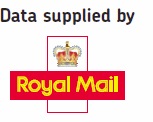 Promoting the ‘Postcode’ Through the Decades
Promoting the ‘Postcode’ Through the Decades
31-July-2012 SimplyPostcode™
Today, using postcodes is a given, we don’t give a second thought to ensuring that our postcards, letters or parcels are addressed using a postcode.
Although it hasn’t always been that way, if you delve into the history of postcodes from the introduction in London in the early 1900’s to the modern version introduced in 1959, they needed promoting to get the general public to use them.
Like anything new, we the people of this fine nation, don’t always like change and in 1959 that’s exactly what happened to how we addressed a letter. Although it took 15 years until 1974 before the entire country was covered by a postcode, it needed several advertising campaigns to get the message across.
In the 1970s the Post Office used advertising campaigns to ‘remind’ us rather than trying to persuade people to use their postcodes. They realised that one of the big reasons for not using them was simply forgetfulness rather than a refusal.
In the early 1980s you may remember Poco the elephant. He was meant to make us associate our ‘forgetfulness’ and as such Poco is fondly remembered. They produced Poco posters, pens, sweatshirts, badges and even a vinyl record (the Postcode Song) with Poco on the cover. This friendly cartoon elephant became recognised everywhere with his catchphrase ‘please use the postcode’ - you’re not properly addressed without it.
Other campaigns, attempted to use storytelling to increase the use of postcodes. In the 1970s they tried using poster explaining why they were important in order to help the public relate to familiar situations. Slapdash Harry and the missing postcode was one such educational poster featuring a cartoon storyboard.
Finally, later in the 1980s the Post Office tried a more sophisticated approach with the notion of a romantic rendezvous to drive the message home, where a couple were to meet at a postcode (postcode, the wording used on the poster was ‘Let's meet under the GU1 3AA’ pictured on a clock.
